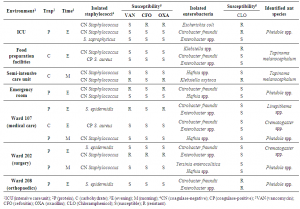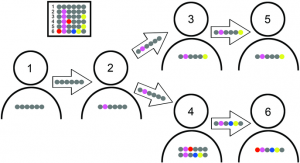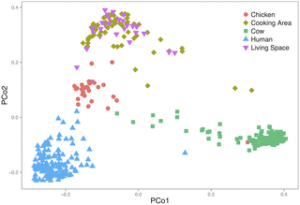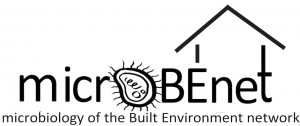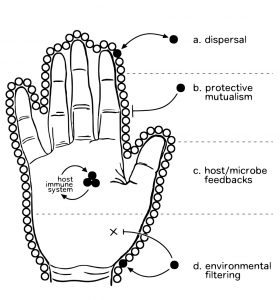Not really sure what to think about this article: Ants as Vectors of Bacteria in Hospital Environments. Published in the Journal of Microbiology Research and authored by Bruna Rafaela Machado Oliveira, Luciano Ferreira de Sousa, Raquel Chalá Soares, Thiago César Nascimento, Marcelo Silva Madureira, Jorge Luiz Fortuna. In a quick scan the science seems reasonable. …
There is a whole issue of the Annals of the NY Academy of Sciences that may be of interest. The focus of the issue is on Antimicrobial Therapeutics Reviews. Some of the papers are freely available. These are Resistance diagnosis and the changing epidemiology of antibiotic resistance(pages 5–17) by David McAdams Resistance diagnosis and the changing …
Quick post here. Nice short post in the On Health Blog at Biomed Central on studies of the population genomics of Burkholderia. Melioidosis is a frequently fatal infectious disease caused by a bacterium (Burkholderia pseudomallei) found in soil in certain parts of the world. We have known about melioidosis for many years, but it’s only …
Quick post. This is a very important read by Helen Branswell in STAT for those interested in antibiotic resistance. Patients are told to finish their antibiotics, even if they feel better, but that guidance may be exacerbating antibiotic resistance, some experts say. Source: Why the advice to take all your antibiotics may be wrong
There is an increasing number of studies with a large number genomes recovered from isolate, metagenome, or single cell sequencing. To bridge the gap between the available genome sequences and available phenotype information, we have developed Traitar, a bioinformatics software to phenotype bacteria based on their genome sequence (see workflow below) . Traitar includes phenotype models for …
Quick post here: Of possible interest: Microbiome sharing between children, livestock and household surfaces in western Kenya in PLOS One. Abstract below The gut microbiome community structure and development are associated with several health outcomes in young children. To determine the household influences of gut microbiome structure, we assessed microbial sharing within households in western Kenya …
So in searching for news stories about bacteria in buildings I found another one with some political connections: Source: Legionella bacteria spread into Parliament showers – timesofmalta.com This follows on my post from earlier: “Derelict White House” contaminated by leptospirosis causing bacteria #WhiteHouse As with that post, my headline here is not the whole story. Yes Legionella …
Got pointed to this Biosafety Design Initiative on Twitter @phylogenomics This may be of interest – “eval of clean & controlled environmnts & design of space & infrastructr” https://t.co/5P8iDsVt2o — Laurie Garrett (@Laurie_Garrett) January 23, 2017 //platform.twitter.com/widgets.js It may be of interest to some. They have courses and other activities connected to microbes in the built …
Just a quick post here. This is an interesting paper on how genotype of Drosophila influences their microbiome. As a side story – I think flies could become an interesting and useful model for studying how the built environment (e.g., vials, cages, food, etc) influence microbiomes. Host genotype can influence the composition of the commensal …
(This post was written by Roo Vandegrift at the University of Oregon) I was recently asked to spearhead the writing of a review centered around the interaction between the concept of hygiene and our increasingly nuanced understanding of the human skin microbiome for the Biology and the Built Environment (BioBE) Center at the University of …
